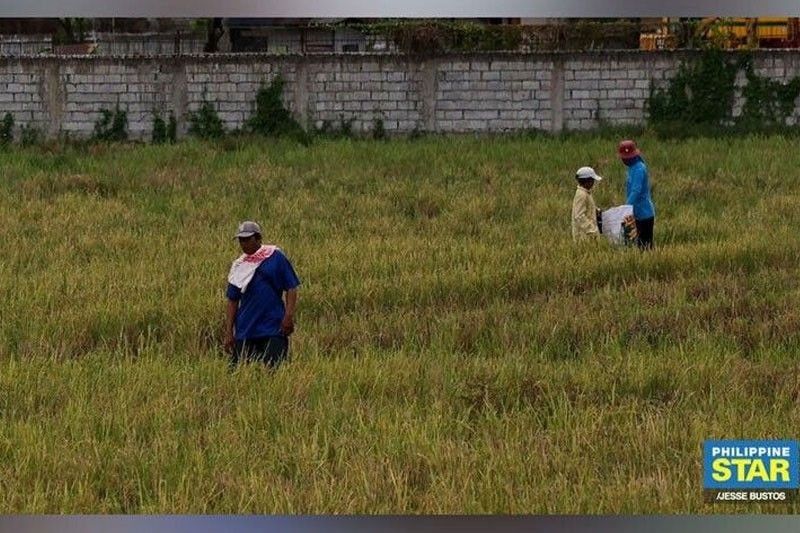P12 billion cash aid to rice farmers fully distributed by June – Department of Agriculture
Farmers harvest rice using sickles in Bocaue, Bulacan on January 2, 2024. Jesse Bustos / The Philippine STAR MANILA, Philippines — The Department of Agriculture (DA) targets to complete the distribution of P12.09 billion cash assistance to nearly 2.4 million rice farmers by the end of the first half after the program was hindered by […]


Farmers harvest rice using sickles in Bocaue, Bulacan on January 2, 2024.
Jesse Bustos / The Philippine STAR
MANILA, Philippines — The Department of Agriculture (DA) targets to complete the distribution of P12.09 billion cash assistance to nearly 2.4 million rice farmers by the end of the first half after the program was hindered by last year’s election ban.
The DA said it has credited half of its targeted 2.384 million rice-farmers under the 2023 Rice Farmers Financial Assistance (RFFA) program, or around 1.195 million farmer-beneficiaries, as of March 11.
Under the program, rice farmers tilling two hectares and below would get P5,000 each. The program is funded by rice tariffs collected by the government in excess of P10 billion.
The DA added that 1.014 million rice farmer-beneficiaries “have already received their cash assistance.” The 2023 RFFA is funded by the excess rice tariffs collected in 2022.
“The (fiscal year) 2023 RCEF-RFFA is expected to conclude by June 30, 2024, to make way for the implementation of the FY 2024 RCEF-RFFA,” according to the DA-Rice Competitiveness Enhancement Fund (RCEF) Project Management Office (PMO).
The Bureau of Customs (BOC) is expected to issue by April 15 a certification on the total amount of tariffs collected from rice imports last year.
The excess rice tariffs collected last year would bankroll this year’s RFFA. Based on BOC data analyzed earlier by The STAR, the government collected P20 billion in excess rice tariffs in 2023.
The DA-RCEF PMO explained that the delay in the implementation of the cash assistance program was caused by last year’s election ban due to the barangay and Sangguniang Kabataan elections.
“However, the FY 2023 RCEF-RFFA has already made significant progress since December 2023, achieving 50 percent accomplishment in less than three months since its commencement,” it said.
The DA-RCEF PMO also cited the “tedious” validation process of the farmer-beneficiaries’ status at the local government unit level, which it pointed out can “cause delays in the onboarding of both new and top-up/existing farmers.”
The DA unit also noted that the “poor” information dissemination about the cash assistance program may have led to the “low” withdrawal rates from the farmer-beneficiaries.
Lastly, the DA-RCEF PMO explained that the distance and lack of mobile signal contributed to the difficulty it experienced in doing caravan events to onboard new farmer-beneficiaries and distribute interventions monitoring cards (IMCs), where the cash assistance is credited.
“The Department is closely monitoring the operations of the FY 2023 RCEF-RFFA by evaluating the progress of all stakeholders at each process step so that the RCEF-PMO will be able to tap stakeholders that are occasionally causing delays in the whole process,” it said.
In a related development, Sen. Cynthia Villar has filed Senate Bill 2601 that seeks to extend the RCEF until 2031.
The bill proposed to extend the distribution of the RFFA until 2031 while seeking other amendments on the use of the excess rice tariff collections. The bill stipulated that P2 billion of the excess rice tariffs be used for small water impounding projects and another P2 billion for the establishment of composting facilities for organic fertilizer.














